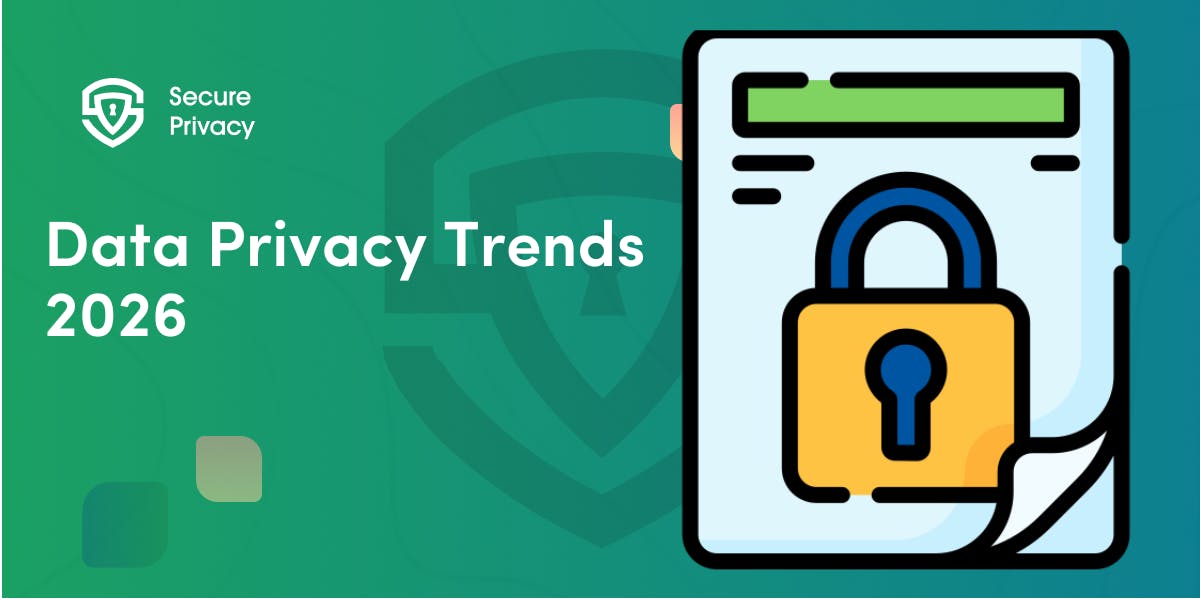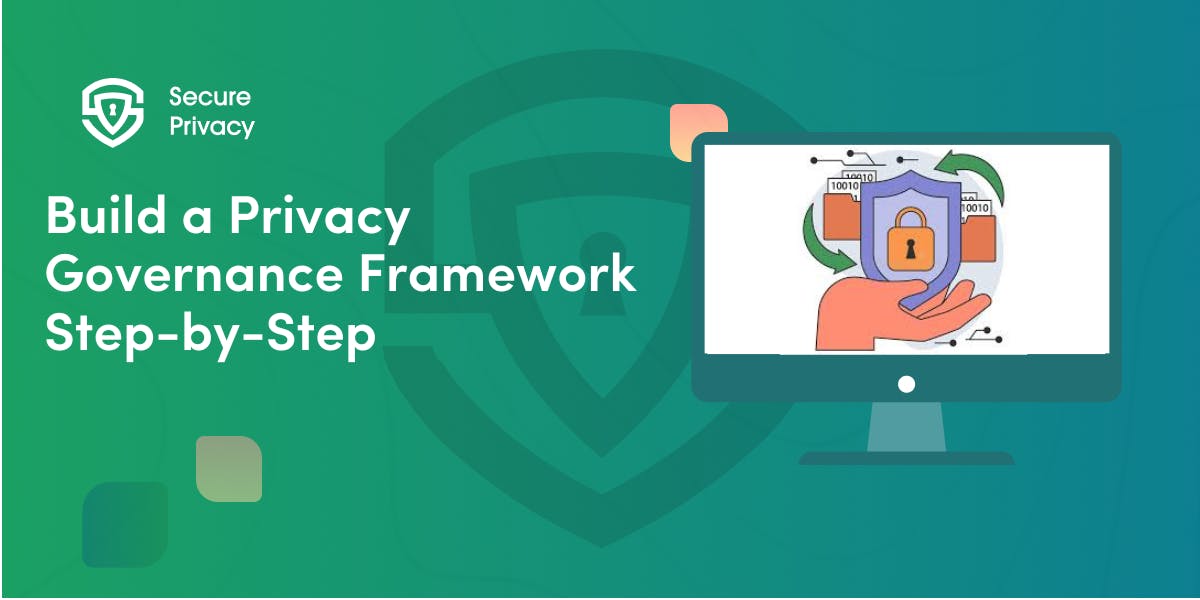AI Consent Reconstruction: Rebuilding Trust Through Generative Recovery
Your company's database just crashed, taking with it millions of consent records that prove customers agreed to data processing. Regulatory auditors are asking for documentation that no longer exists. Traditional backup systems failed, and you're facing potential fines that could destroy your business. This nightmare scenario is becoming reality for organizations worldwide as cyber attacks and system failures destroy critical privacy documentation.
Enter AI Consent Reconstruction: an emerging technology that uses artificial intelligence to rebuild lost consent records from digital breadcrumbs scattered across your systems. By analyzing access logs, behavioral signals, and backup fragments, generative AI can reconstruct verifiable consent trails with mathematical confidence scores. This capability represents both a lifeline for businesses facing data disasters and a fundamental shift in how we think about privacy documentation.
The implications extend far beyond disaster recovery. As AI systems become more sophisticated at inferring consent from indirect evidence, they raise profound questions about the nature of consent itself. Can an algorithm accurately determine what you agreed to based on your digital footprints? Should businesses rely on AI-generated consent records for regulatory compliance? These questions are no longer theoretical — they're urgent practical challenges facing privacy professionals today.
How AI Reconstructs Lost Consent Records
AI consent reconstruction combines multiple data sources and advanced algorithms to rebuild missing privacy documentation with quantifiable accuracy.
Digital Evidence Sources Provide Reconstruction Foundation
AI systems analyze fragmented evidence scattered across organizational infrastructure to rebuild consent records. Access logs provide timestamps showing when users viewed privacy policies or visited preference centers, creating breadcrumbs of privacy-related interactions. Behavioral signals from clickstream data reveal cookie banner interactions and consent flow navigation patterns.
Third-party correlations from marketing platforms often contain opt-in and opt-out status records that survived primary database failures. Backup fragments from systems like Salesforce frequently contain partial database snapshots that preserve pieces of consent history even when main systems fail completely.
This multi-source approach creates redundancy that traditional consent management systems often lack. When primary consent databases fail, the distributed nature of digital evidence provides multiple pathways for reconstruction, often revealing consent patterns that weren't obvious in centralized systems.
Generative AI Workflows Transform Fragments Into Records
The reconstruction process follows a systematic workflow that transforms scattered evidence into verifiable consent documentation. Autonomous agents collect artifacts across systems, automatically identifying and cataloging relevant privacy-related data points from diverse sources.
Large language models then sequence events into chronological narratives, using natural language processing to understand the context and meaning of user interactions with privacy controls. Advanced models predict likely consent status using Bayesian networks that calculate probability distributions based on available evidence.
The final output includes reconstructed consent timestamps, probabilistic confidence scores, and supporting evidence references that enable audit verification. For example, an AI system might rebuild consent records showing 89% confidence that a specific user opted into analytics on March 15, 2025, based on documented policy page visits, Google Analytics click data, and absence of subsequent revocation requests.
Mathematical Confidence Scoring Enables Regulatory Acceptance
AI reconstruction systems provide mathematical confidence scores that quantify the reliability of generated consent records. These scores combine multiple evidence sources using statistical models that account for data quality, temporal consistency, and corroborating information across different systems.
Confidence thresholds create decision frameworks for determining when reconstructed records meet regulatory standards. European Data Protection Board guidelines suggest that synthetic audit trails may be acceptable if underlying data sources are documented, confidence thresholds exceed 95%, and human oversight validates outputs.
This quantitative approach addresses regulatory concerns about AI-generated evidence by providing measurable standards for accuracy and reliability. Rather than requiring perfect reconstruction, the system acknowledges uncertainty while providing statistical frameworks for making informed compliance decisions.
Legal Framework and Regulatory Compliance
AI consent reconstruction operates within evolving legal frameworks that balance innovation with privacy protection requirements.
GDPR Article 7 Accountability Requirements
GDPR's accountability principle requires organizations to demonstrate valid consent, creating legal obligations that AI reconstruction systems must satisfy. The regulation doesn't specify how organizations must maintain consent records, focusing instead on the ability to provide evidence when required.
European Data Protection Board 2025 guidelines permit synthetic audit trails under specific conditions including documented underlying data sources, confidence thresholds exceeding 95%, and human oversight validation of AI outputs. This regulatory acceptance acknowledges that AI reconstruction may provide more reliable consent documentation than traditional systems that can fail catastrophically.
The accountability framework emphasizes demonstrable compliance rather than perfect record-keeping, creating opportunities for AI systems that can provide stronger evidence than conventional approaches. Organizations using AI reconstruction must document their methodologies and validation processes to satisfy regulatory scrutiny.
CCPA and CPRA Transparency Mandates
California privacy regulations create specific disclosure requirements for businesses using AI reconstruction systems. The Right to Know provisions require businesses to disclose reconstructed consent timelines upon request, ensuring consumers understand how their consent history was determined.
California's 2026 AI Audit Act introduces mandatory disclosure of reconstruction methods, requiring businesses to explain how AI systems rebuild consent records and what evidence sources inform these determinations. This transparency requirement reflects growing regulatory focus on AI explainability in privacy-sensitive applications.
These transparency mandates create operational requirements for organizations implementing AI reconstruction, necessitating clear documentation and user-accessible explanations of reconstruction methodologies. Businesses must balance the benefits of AI reconstruction with the administrative overhead of transparency compliance.
Emerging International Standards
Different jurisdictions are developing varied approaches to AI-generated consent evidence, creating compliance complexity for multinational organizations. Some regulators focus on technical accuracy standards, while others emphasize procedural transparency and human oversight requirements.
International coordination efforts aim to establish common frameworks for evaluating AI reconstruction systems, but significant differences remain in regulatory approaches and acceptance criteria. Organizations operating across multiple jurisdictions must navigate varying requirements while maintaining consistent reconstruction methodologies.
The regulatory landscape continues evolving as authorities gain experience with AI reconstruction implementations and develop more sophisticated evaluation frameworks. Early regulatory guidance provides general principles while detailed technical standards emerge through practical application and regulatory feedback.
Implementation Strategies and Technical Approaches
Successful AI consent reconstruction requires careful balance between automated efficiency and human oversight to ensure accuracy and regulatory compliance.
Hybrid Human-AI Validation Workflows
Effective implementation typically employs hybrid approaches that combine AI efficiency with human judgment for critical decisions. AI systems perform initial classification of consent signals into categories such as opt-in, opt-out, or ambiguous, handling the bulk of routine reconstruction tasks automatically.
Human review focuses on high-stakes cases involving sensitive data like health information or complex consent scenarios that require nuanced interpretation. Legal teams validate edge cases and establish precedents that inform ongoing AI training and refinement.
Continuous learning mechanisms enable AI models to improve accuracy by training on adjudicated cases where human reviewers have validated or corrected AI determinations. This feedback loop enhances system performance while maintaining human oversight for critical decisions.
Immutable Audit Systems Provide Verification
Blockchain-anchored logging systems create tamper-evident records of both original consent events and subsequent reconstruction attempts. These immutable audit trails provide verification capabilities that address regulatory concerns about AI-generated evidence reliability.
Tools like FireTail provide blockchain-anchored logs of original consent events, subsequent reconstruction attempts, and validation checks by compliance officers. This comprehensive audit trail enables regulatory verification while preventing post-hoc manipulation of reconstruction results.
The immutable nature of blockchain logging addresses concerns about AI hallucinations or deliberate manipulation by creating permanent records of reconstruction processes and validation decisions. These systems provide the audit trail transparency that regulators require for accepting AI-generated evidence.
Federated Learning Addresses Privacy Concerns
Advanced implementations use federated learning approaches that enable AI model training without centralizing sensitive data. This approach addresses Right to Erasure conflicts by enabling model improvement without retaining personal data that might conflict with deletion requests.
Ephemeral model training techniques allow AI systems to learn from historical patterns without permanently storing personal information that could create ongoing privacy obligations. These approaches enable continuous improvement while maintaining compliance with data minimization principles.
Privacy-preserving machine learning techniques enable AI reconstruction systems to improve accuracy through collective learning while protecting individual privacy rights. This balance between system improvement and privacy protection represents a key technical challenge in AI reconstruction implementation.
Real-World Applications and Case Studies
Current implementations demonstrate both the potential and challenges of AI consent reconstruction across different industries and regulatory environments.
Healthcare Data Breach Recovery
A 2025 European health platform breach that erased 2.1 million consent records illustrates large-scale AI reconstruction capabilities. Ransomware attacks destroyed primary databases while backup systems failed to capture complete consent histories.
Anthropic's Claude 3 reconstructed consent records using backup email headers and content management system edit logs, achieving 97.3% accuracy when compared against user-provided preferences during post-breach surveys. This reconstruction enabled the organization to avoid a potential €28 million GDPR fine by demonstrating "all reasonable measures" for consent documentation.
The healthcare case demonstrates AI reconstruction's value in critical scenarios where traditional backup systems prove inadequate. However, it also highlights the complexity of validating AI-generated records against user expectations and regulatory requirements.
Automotive Industry CPRA Compliance
A California auto-dealer network that lost 18 months of CPRA opt-out requests illustrates AI reconstruction applications in consumer privacy rights management. System failures destroyed records of customer requests to stop data sales, creating potential compliance violations.
Fine-tuned Llama 3 models analyzed service center call transcripts and parts order histories to identify 83% of users who had verbally revoked data sales consent. This reconstruction reduced Data Subject Access Request response times from 45 days to 72 hours while restoring compliance capabilities.
The automotive case shows how AI reconstruction can address specific regulatory requirements like CPRA's data sales restrictions while improving operational efficiency. The use of conversational data sources demonstrates AI's ability to extract consent signals from unstructured information sources.
Risk Management and Mitigation Strategies
AI consent reconstruction introduces specific risks that organizations must address through systematic mitigation approaches.
False Positive Prevention
AI systems may incorrectly infer consent from ambiguous behavioral signals, creating false positive consent records that could violate user preferences. Mitigation strategies require multiple independent evidence sources before confirming positive consent status, reducing the likelihood of incorrect inferences.
Cross-validation approaches that compare AI predictions against multiple data sources help identify inconsistencies that suggest reconstruction errors. These validation mechanisms create additional confidence in AI-generated records while flagging cases that require human review.
Statistical approaches that account for base rates of consent and opt-out behavior help calibrate AI predictions to realistic expectations. Understanding population-level consent patterns enables more accurate individual predictions while avoiding systematic biases.
Model Hallucination Controls
Large language models occasionally generate plausible but incorrect information, creating risks for consent reconstruction accuracy. Immutable log anchoring using systems like Hyperledger creates permanent records that enable verification of AI reconstruction claims against documented evidence.
Evidence-based reconstruction approaches that require specific supporting documentation for each consent determination help prevent pure hallucination scenarios where AI generates consent records without factual foundation. These controls ensure that reconstruction remains grounded in actual evidence rather than model speculation.
Regular validation against known correct records helps identify systematic biases or hallucination patterns in AI reconstruction systems. This ongoing monitoring enables proactive correction of model behaviors that could compromise reconstruction accuracy.
Bias and Fairness Considerations
Historical consent data may contain biases that AI systems could perpetuate or amplify during reconstruction processes. Regular fairness audits using tools like AI Explainability 360 help identify and correct biased patterns in reconstruction outcomes.
Diverse training data and bias detection mechanisms help ensure that AI reconstruction systems perform accurately across different user populations and consent scenarios. These approaches address concerns about AI systems discriminating against particular user groups or consent patterns.
Transparency in AI decision-making enables ongoing monitoring for biased outcomes while providing explanations that support regulatory compliance and user understanding. Explainable AI techniques help identify when reconstruction decisions reflect problematic patterns rather than legitimate evidence.
Future Development and Industry Trends
The evolution of AI consent reconstruction reflects broader trends in privacy technology and regulatory adaptation to artificial intelligence capabilities.
Regulatory Adaptation and Standards Development
Anticipated 2026 EU regulations may mandate AI reconstruction tools for critical infrastructure providers, recognizing these systems as essential resilience capabilities rather than optional enhancements. This regulatory evolution reflects growing acceptance of AI-generated evidence when properly validated and documented.
Emerging technical standards for quantum-resistant consent hashing using algorithms like CRYSTALS-Dilithium could enable multi-decade validity for AI-reconstructed consent records. These cryptographic advances address long-term verification needs while maintaining security against future technological threats.
Market analysis predicts that 40% of consent management platforms will offer AI reconstruction capabilities by 2027, indicating rapid industry adoption of these technologies. This growth reflects both technological maturation and increasing recognition of reconstruction's value for business continuity.
Technology Integration and Enhancement
Integration with existing privacy infrastructure enables AI reconstruction to enhance rather than replace traditional consent management systems. These hybrid approaches combine real-time consent collection with reconstruction capabilities for comprehensive privacy documentation.
Advanced AI techniques including multimodal learning that combines text, behavioral, and temporal signals could improve reconstruction accuracy while addressing more complex consent scenarios. These technological advances enable more sophisticated understanding of user intent and consent patterns.
Automated compliance reporting that integrates AI reconstruction with regulatory filing requirements could streamline privacy compliance while ensuring consistent documentation standards. These integrated approaches reduce administrative overhead while improving compliance reliability.
Building Resilient Privacy Infrastructure
AI consent reconstruction represents a paradigm shift in compliance resilience, enabling organizations to recover from data disasters while maintaining regulatory standing. This technology transforms privacy compliance from a vulnerability into a competitive advantage by providing superior documentation and audit capabilities.
However, successful implementation requires careful attention to transparency, accuracy, and user rights. The Dutch DPA's 2025 ruling against Reconsent.ai emphasized that users deserve to know when and how their consent footprints are recreated, highlighting the importance of disclosure and user awareness.
When implemented with rigorous validation and ethical AI governance, consent reconstruction creates trust-building opportunities rather than compliance burdens. Organizations that embrace these technologies proactively often find that improved documentation and audit capabilities strengthen rather than complicate their privacy programs.
The future of privacy compliance likely depends on sophisticated AI systems that can provide more reliable and comprehensive documentation than traditional manual approaches. Success requires balancing technological capability with human oversight, regulatory compliance, and genuine respect for user privacy rights.
As privacy regulations become more complex and data environments more distributed, AI reconstruction provides essential capabilities for maintaining compliance while enabling business innovation. Organizations that develop these capabilities thoughtfully position themselves for success in an increasingly privacy-conscious digital economy.
Frequently Asked Questions
How accurate are AI-reconstructed consent records compared to original documentation?
AI reconstruction systems typically achieve 85-97% accuracy when validated against surviving records or user surveys, depending on the quality and quantity of available evidence sources. European Data Protection Board guidelines suggest 95% confidence thresholds for regulatory acceptance. However, accuracy varies significantly based on data completeness, time elapsed since original consent, and the sophistication of reconstruction algorithms used.
Can users challenge or correct AI-reconstructed consent records?
Yes, users retain rights to challenge reconstructed consent records under existing privacy regulations. Organizations must provide transparency about reconstruction methods and allow users to dispute inaccurate determinations. Most implementations include human review processes for contested cases and mechanisms for users to provide corrective information when AI reconstruction conflicts with their recollections.
What evidence sources do AI systems use for consent reconstruction?
AI reconstruction typically analyzes access logs showing privacy policy views, clickstream data from consent interfaces, third-party marketing platform records, email interaction histories, customer service transcripts, and backup database fragments. The quality and diversity of available evidence sources significantly impact reconstruction accuracy and confidence levels.
How do regulators view AI-generated consent records for compliance purposes?
Regulatory acceptance varies by jurisdiction, but most authorities focus on documentation quality and validation processes rather than prohibiting AI-generated records entirely. European authorities have provided conditional acceptance for high-confidence reconstructions with proper oversight, while California requires disclosure of reconstruction methods. Organizations must document their methodologies and validation processes for regulatory review.
What happens when AI reconstruction conflicts with user memory of consent decisions?
When conflicts arise, most organizations prioritize user recollection over AI reconstruction, treating disputed cases as opportunities to clarify current consent preferences rather than proving historical decisions. Best practices include providing users with evidence supporting AI determinations while allowing them to establish new consent preferences that supersede historical records regardless of reconstruction confidence.
How do organizations prevent AI systems from hallucinating false consent records?
Prevention strategies include requiring multiple independent evidence sources for positive consent determinations, implementing blockchain-anchored audit trails that verify evidence authenticity, using confidence thresholds that flag uncertain cases for human review, and regular validation against known correct records to identify systematic biases or hallucination patterns.
What are the cost implications of implementing AI consent reconstruction systems?
Implementation costs vary significantly based on organizational size and complexity, typically ranging from tens of thousands to millions of dollars for enterprise deployments. However, organizations often find that reconstruction capabilities pay for themselves by avoiding regulatory fines, reducing audit preparation costs, and enabling faster response to data subject requests. The business continuity value during data disasters often justifies the investment independently of routine compliance benefits.
Get Started For Free with the
#1 Cookie Consent Platform.
No credit card required

Privacy Governance for Small Businesses: Step-by-Step Guide
You're a 20-person company. A customer asks for their data. Your marketing team just added a new tracking pixel. Your CRM vendor updated their terms. And you just realized you might need to comply with GDPR, CCPA, or both.
- Legal & News
- Data Protection

Data Privacy Trends 2026: What Every Business Needs to Know
You're planning next year's compliance roadmap, but the rules keep changing. New regulations emerge monthly. Enforcement penalties double overnight. And now, AI governance lands on your desk alongside data privacy obligations.
- Legal & News
- Data Protection

How to Build a Privacy Governance Framework: Step-by-Step Guide
Privacy governance isn't about checking regulatory boxes — it's about building systematic capability to manage personal data responsibly across your entire organization. Whether you're facing GDPR obligations, preparing for CCPA enforcement, or establishing foundational privacy practices, a structured framework transforms compliance from reactive firefighting into proactive risk management.
- Legal & News
- Data Protection

